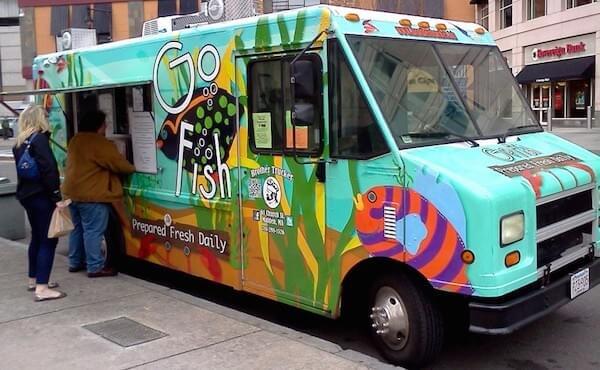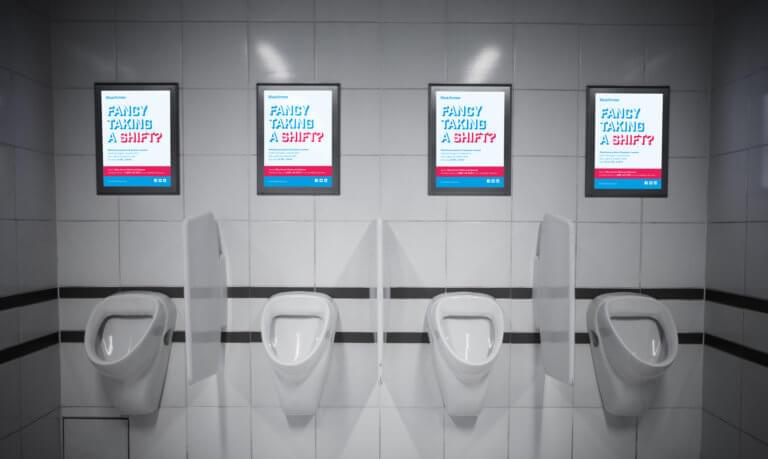
It’s no surprise that New York City is the king of OOH advertising. When walking down the street, there’s no such thing as blank space, only ad space. New York is the ideal place for advertising since 63 million tourists visit New York annually. With such a large population to advertise to, you can expect 1.5 million impressions from a day-to-day basis. In this advertising market, how much does it cost to get an advertisement in NYC? Let’s dive in and look at the rates of the different advertising spaces this city has to offer.
NYC Billboard Spaces and Advertising Rates
This city is known for the flashy digital billboards in downtown areas. These electronic posters add to the beauty of a modern city and are what makes the city so iconic. Although mega advertisements are the main attraction, New York is known for using a lot of alternative ad spaces for smaller companies. The following prices are information taken from New Ad City, unless stated otherwise. For additional information, I’ll provide input on why these alternative advertising rates are the way they are.
Restrooms and Change Room Advertising
Ads on Urinals and on the Back of Stall Doors
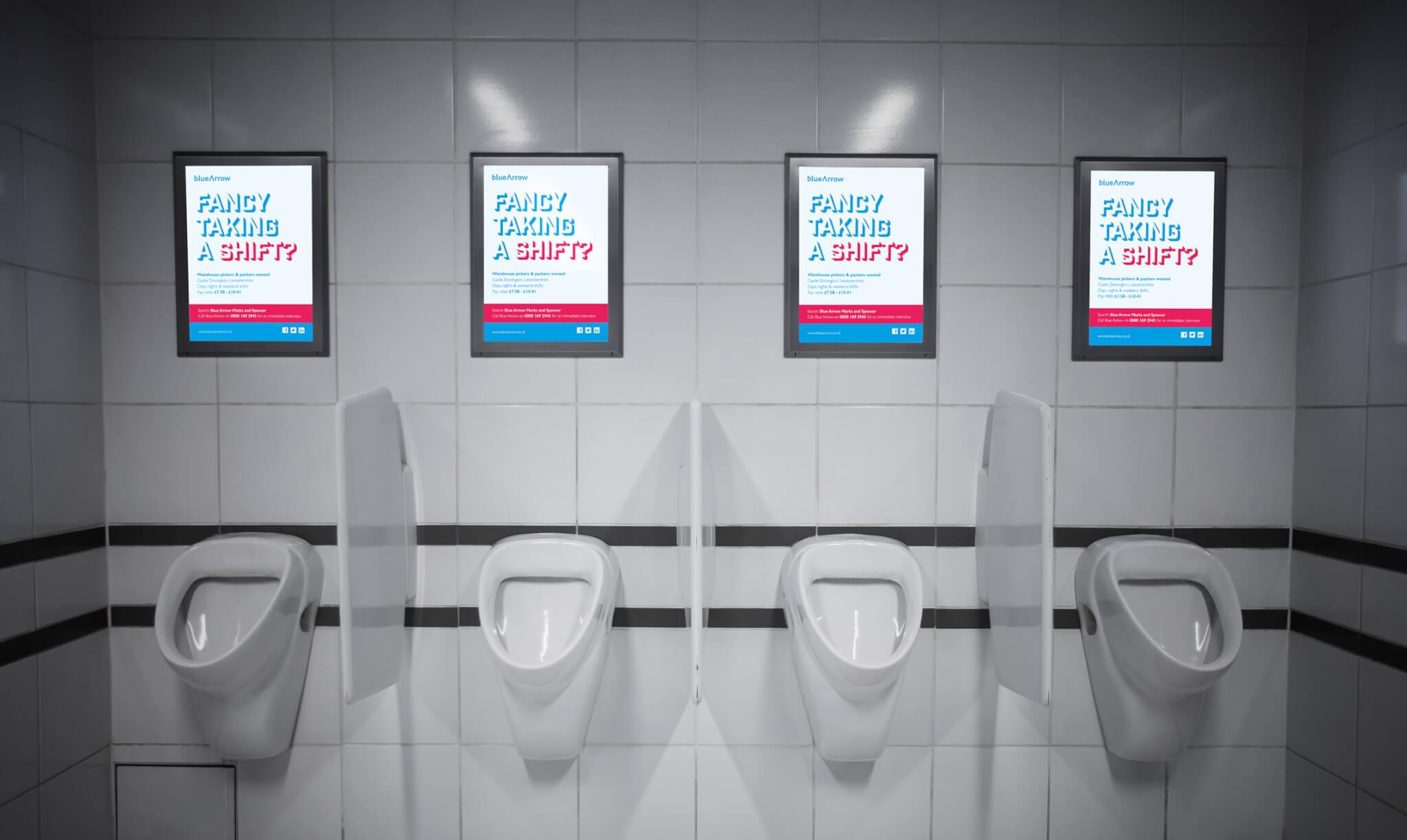
Don’t be surprised, restrooms might not be so private after all. Companies know that you have a few seconds to spare while doing your business, so they do their business too, by advertising to you! Companies can rent out the whole lane of urinals or have the option of renting out a single stall. On an annual basis, restroom ads comprise of $2.1 billion in washroom advertising.
The reason why businesses use these types of ads is because it’s easy to pinpoint the ideal demographic. For example, if an ad were placed in the restroom of a fancy restaurant, advertisers would easily know the age range, marital status, and average income of the people at that location. When it comes to bathroom ads, companies like direct demographic targeting and the guarantee that people will come in contact with the ad during their daily routine.
- Price Range: $100 to $125 for four weeks.
Bathroom Door Ads
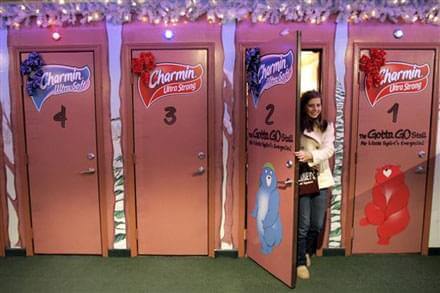
Other than the backdoor of stalls, advertisements can be placed on the entrance/exit door as well. These ads can appear on the front or back of the door, or both sides. They have different effects compared to the posters on stall doors. If you have an advertisement on a particular stall, not everyone will use that stall and see your ad. With a bathroom door ad, you can expect everyone who enters the bathroom to see your ad.
Although there is a 100 percent impression rate, keep in mind that not everyone will be able to read the ad. With urinal ads, people have time to stick around to read but with door ads, people can leave quickly. If you’re planning on using a bathroom door ad, make sure it’s placed in restrooms that have long line-ups, or usually busy spots.
- Price Range: $110 for four weeks.
20 x 16 Inch Gym-Locker-Room Ads

Not all people stop exercising after taking mandatory high school gym class. According to a fitness habit survey on Americans who exercise, 73 percent of Americans say they work out one or more times a week. While some people check themselves out in the mirror, others can check out the ad in front of them. This ad space is ideal for weight loss programs and companies that promote healthy eating. From my knowledge, there is some ad competition. In locker rooms, you can also find ads in front of urinals and on the back of stalls.
- Price Range: $125 for four weeks.
Public Transit Advertisements
Buses
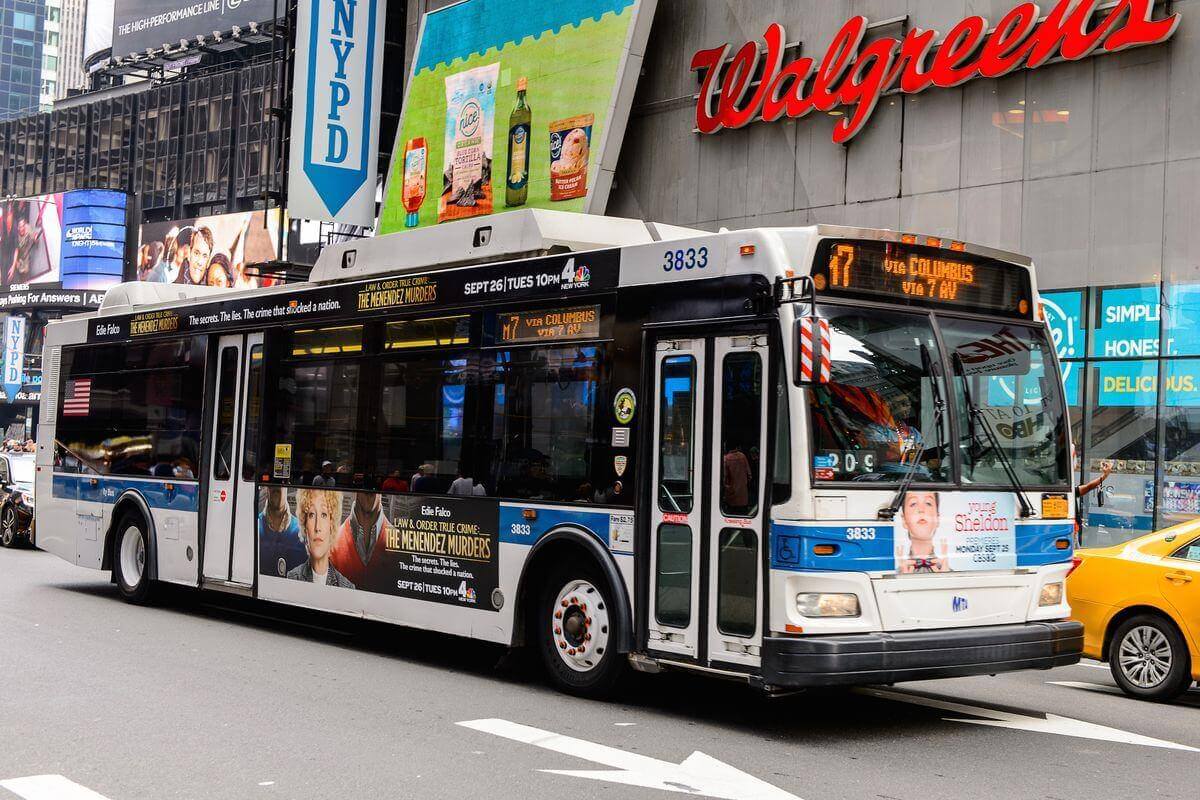
New York buses are packed to the brim. As you can see listed below, prices for an exterior bus ad are a lot pricier compared to the interior ad. If you don’t know why exterior ads can cost more, here’s a breakdown for you.
The exterior ad is the highlight of the vehicle. With an exterior ad, it shows to be the most prominent ad and has no direct competitors. This bus side also gets the most exposure for being visible from the outside. People have to be a passenger to see an interior bus ad while anyone around the area can see an exterior ad. Exterior bus ads attract the attention of pedestrians, drivers, and public transit passengers, which leads to more exposure.
Interior ads also have their own effectiveness. They’re easier to read compared to exterior ads. More people have time to read an interior ad since they’re on the bus for a certain amount of time. There are also ways of drawing out competitors. Some companies rent out a whole row of ad space in order to stand out.
- Price Range:
- $500 for an exterior ad for four weeks.
- $26 each for interior ad space for four weeks.
Bus Shelters
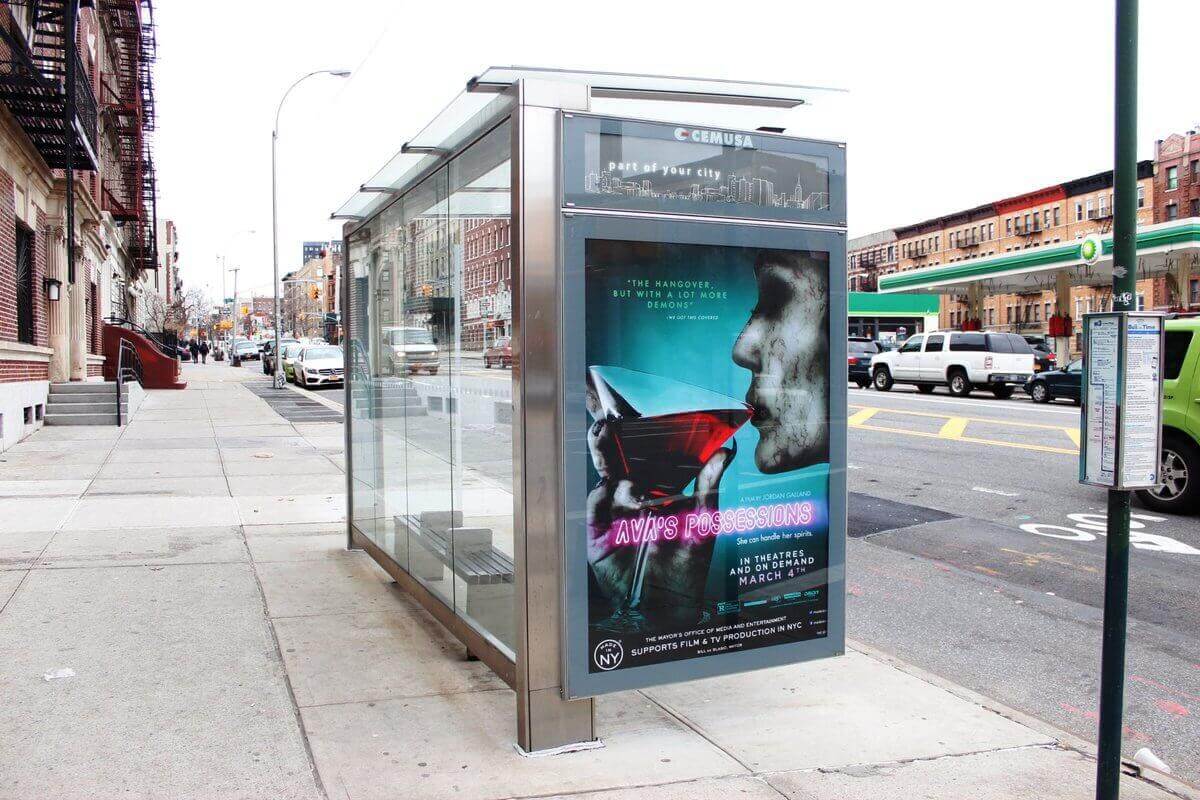
Bus shelters are an excellent way to advertise, especially in a busy place like New York City. According to American public transit, New Yorkers usually wait an average of 15 minutes for their bus to arrive. While waiting long for the bus, people can get impatient. To distract themselves from the clock, people stare at shelter ads instead. The price range for bus ads is quite extensive because it depends on which neighborhood the ads are placed in. You can expect it to be more expensive to advertise in high-income areas like Manhattan.
In terms of effectiveness, bus shelter ads reach people without having them break away from their usual routine. By having an ad be in sync with a person’s daily routine, it’s a pleasant way of informing someone without taking away extra time from their life. This type of ad space is also great for spreading campaign awareness to a local audience.
- Price Range: $1,000 to $5,000 for a standard 69-inch-by-48-inch panel for four weeks.
Static Subway Entrance Ads
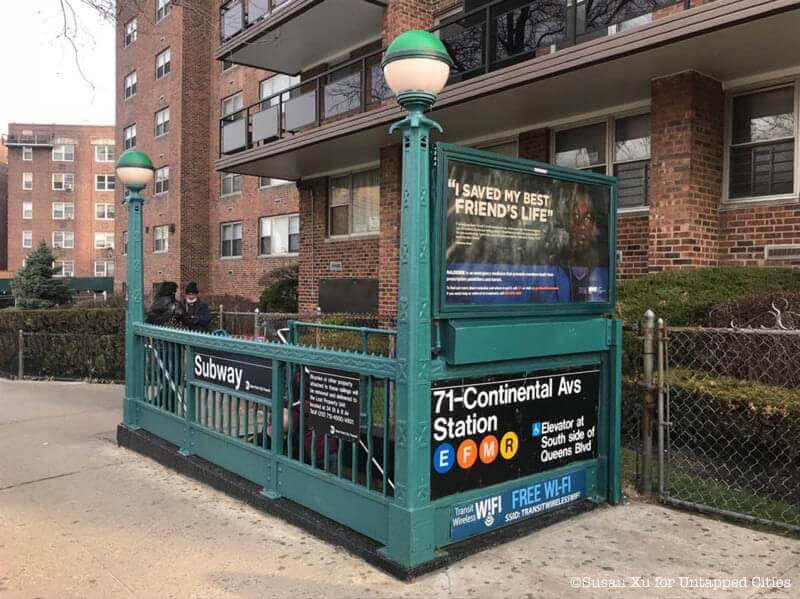
For people who walk to the subway station, they know that on top of the subway entrance sign, there’s an ad.
Bus entrance ads work differently than regular entrance ads. With a typical entrance ad, people don’t spend much time reading them because the walking distance is short. With a transit entrance billboard, people can spot the bright colors of these stair entrances and will walk towards them from a long distance. While walking towards the staircase, it’s easy to notice the advertisement, and there is more time allowance to read it. These types of advertisements are visible to incoming transit users and people that walk by them.
- Price Range: $3,000.
Digital Subway Entrance Ads
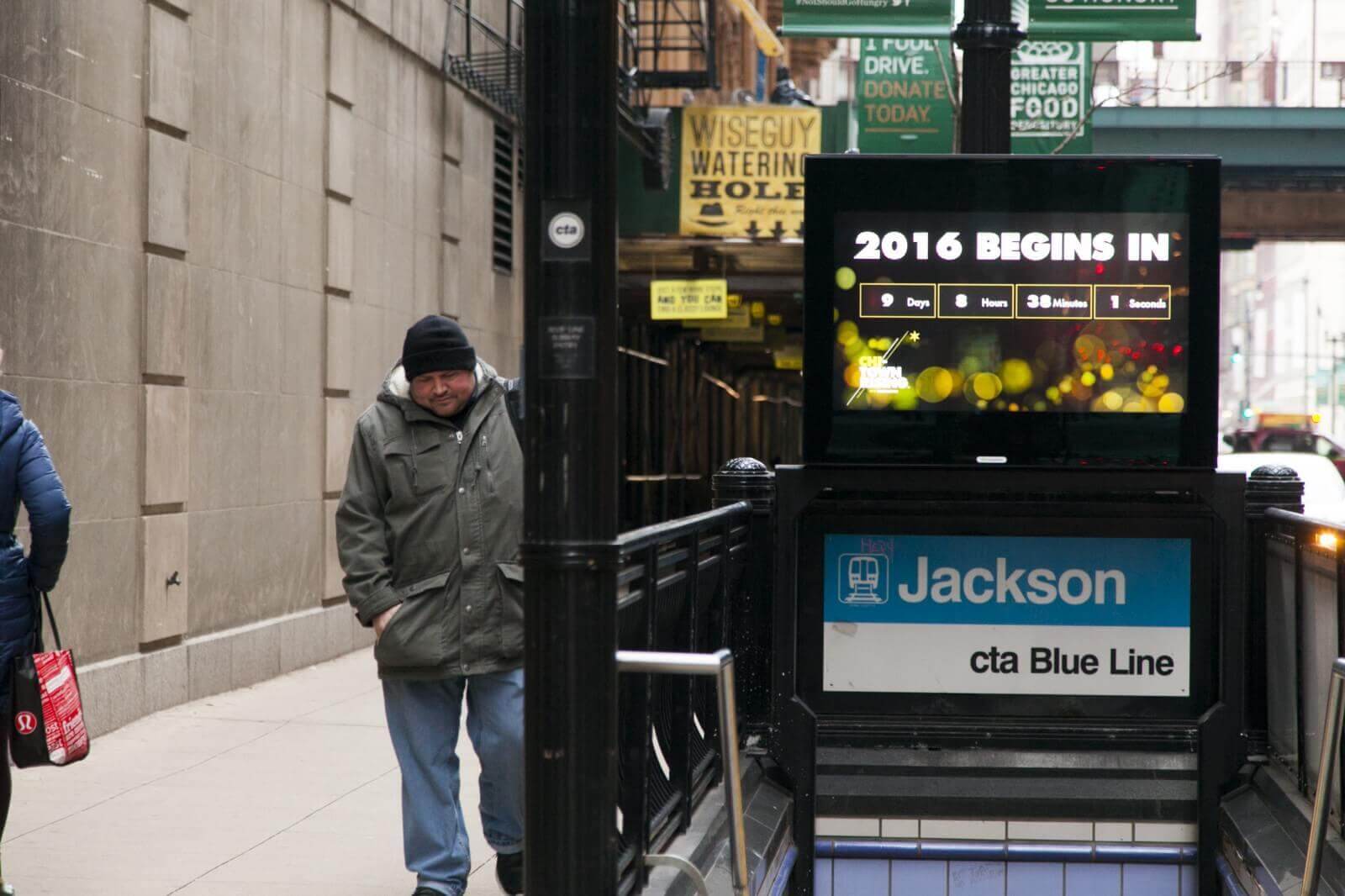
In terms of ad effectiveness, digital screens are much more memorable than static ones. In that linked Outdoor advertisement study, it turns out that while 55 percent of people can recall a traditional ad message, 89 percent of people who walk by a digital ad can remember what it said. Although digital signs are memorable, remember that ad visibility with electronic signs are not guaranteed. With a static ad, people can see an advertisement at any moment while for a digital ad, a person might pass by the area while a different advertisement is playing due to shared ad space and screen rotation. In order to avoid this situation, you can buy more viewing time for your ad. Whether or not you want a static subway entrance billboard or a digital one is up to you.
- Price Range: $274,000 for six ten-second spots every minute on each of the city’s 80 digital displays
Subway Platform
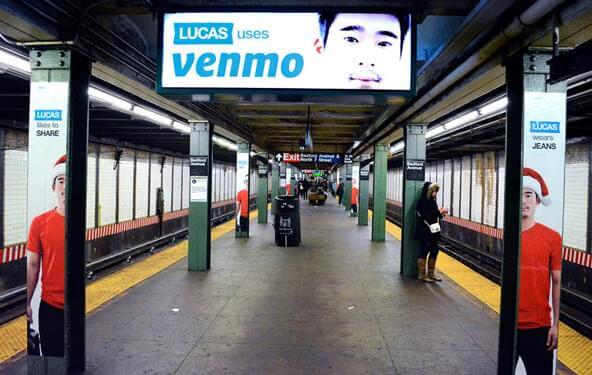
Subway platforms are a huge marketing space in the Big Apple. With the New York subway system being one of the biggest in the world, you can expect an average of over 5 million people that use this transit every day. There are bound to be ads on subway platforms. People can see them on the other side of the platform before a train comes. There’s also the opportunity of people seeing the ad while walking in and out of the platform area.
In terms of effectiveness, subway ads work because they are in a natural line of view. When people wait for the subway, it’s natural for them to stand directly in front of the platform. In front of them would be an advertisement on the walls of the tube which they can view and read. These types of ads work well because they’re in a person’s natural line of vision, but they won’t be considered if the subway comes immediately.
- Price Range: $40,000 to cover 200 stations.
Ads on the Street
Mobile Billboard Trucks
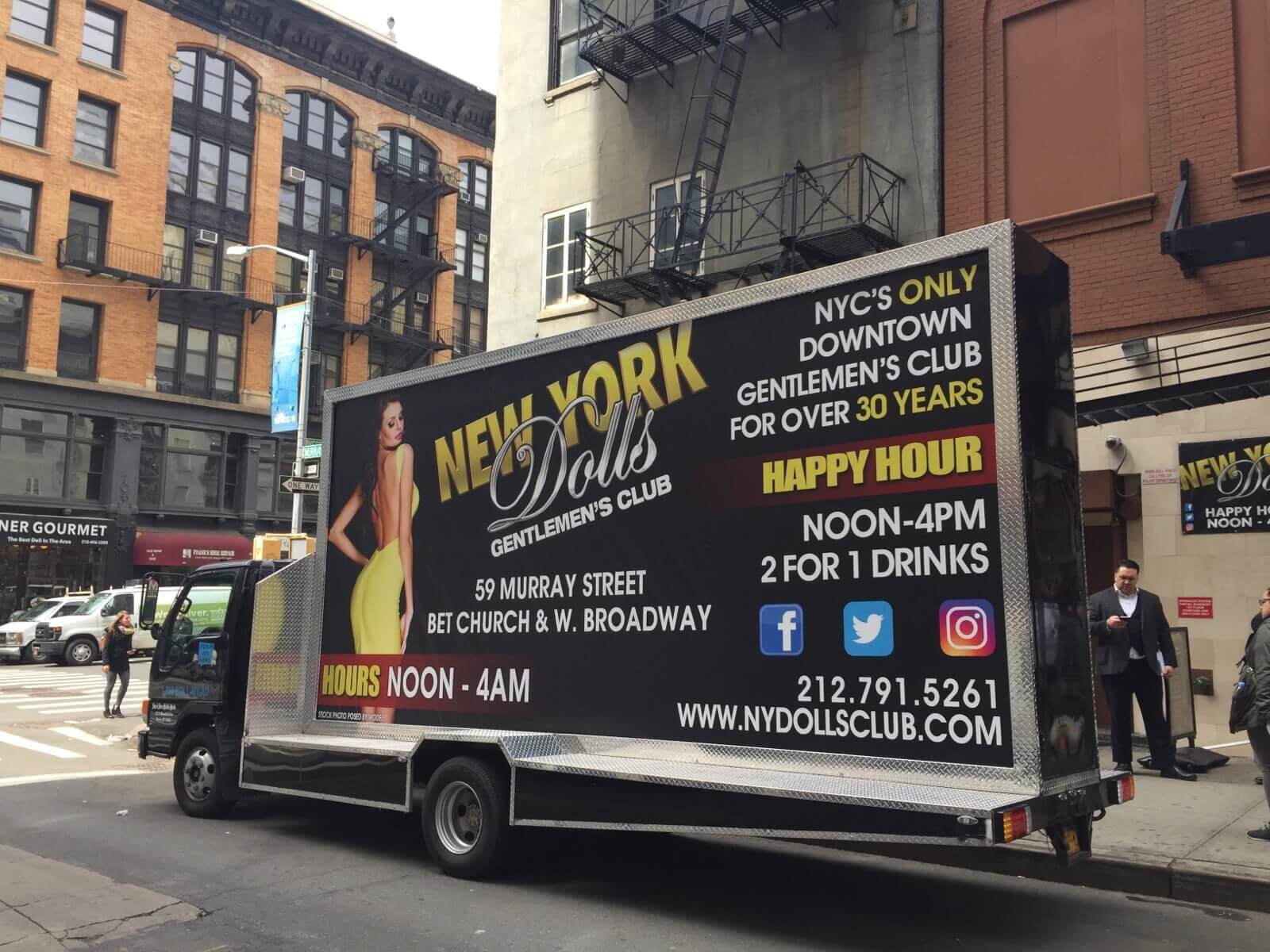
Mobile billboard trucks have billboard ads wrapped around its rectangular surface. Truckside advertising is well-liked and adjusted to any sized business. Companies buy into truckside ads because they fill up space on trucks. By painting over white space, the vehicles produce high levels of brand awareness when driving on the road. These ad campaigns are flexible since the billboards are easy to swap in and out. The simplicity of changing ads makes it easier to make design changes over time.
This ad platform is unique for being able to travel around. With the ability to move around the city, impression counts can increase drastically compared to a standard billboard. These truckside ads are the best option for spreading brand awareness.
- $5,000 per 50-hour week.
Wrapped vehicles
Vehicle wraps are flashier than billboard trucks. Instead of having an ad on the sides of the car, these wraps surround the entire vehicle, including the doors. These wrapped vehicles are beautiful but removing them isn’t easy. They’re delightful to look at, but they have their challenges in removal.
Vehicle wrap removal services are rare to find because they’re challenging to remove, and people hardly take to them because of the costs. Vehicle wrap removal fees can cost $1000, plus additional labor fees. Removing vehicle wraps damages the paint, so you have to pay $2500 to recover the loss. What you pay to remove the vehicle wrap can equal to a third or half of what you paid to get one. If you’re planning to get one, make sure you’re satisfied with the design and take good care of it. They’re pretty permanent otherwise. Think of them like a vehicle tattoo.
- Price Range: $6,500 and up.
Taxis
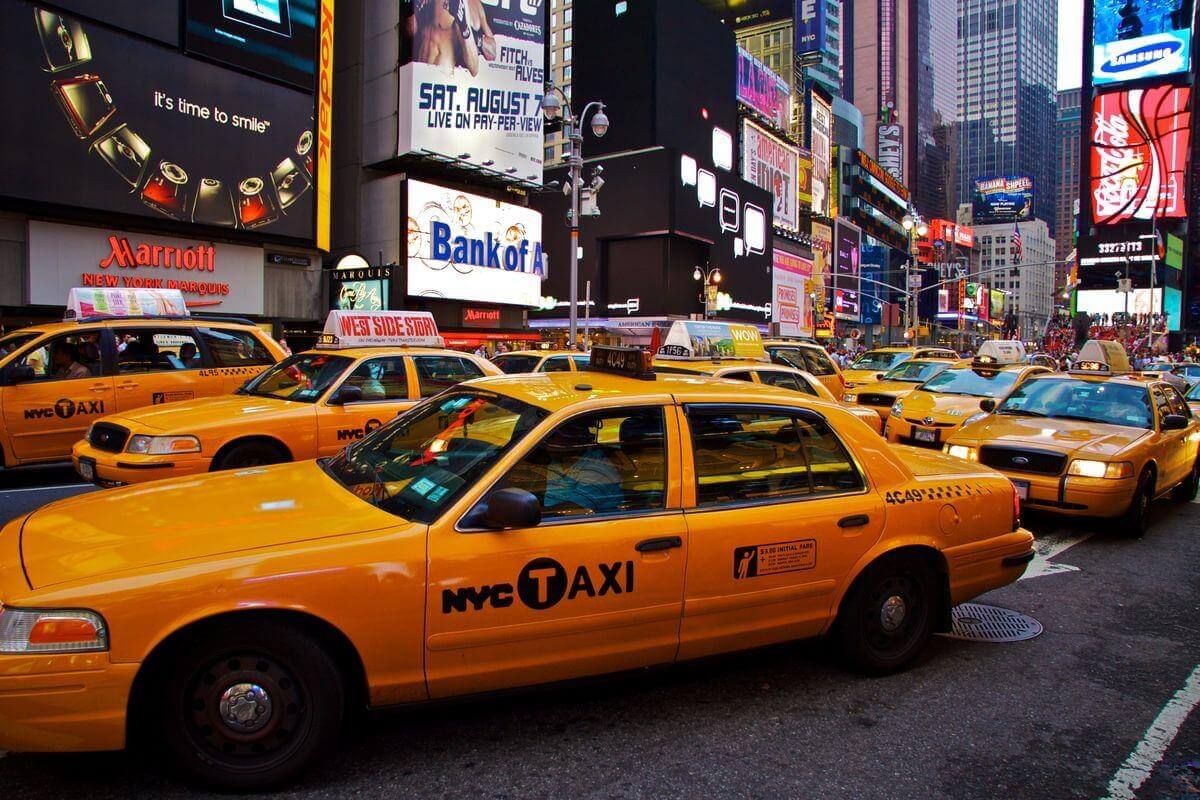
Before entering the vehicle, you may notice the square structure on top of a taxi. That banner on top of your cab is none other than an ad. That banner is called a taxi top, and these ads can be traditional or digital. To rent a taxi top ad, a company needs to purchase a minimum number of 50-200 taxi advertisements depending on the timing.
It’s important to take note that the taxi era is slowly dying. Ride apps like Uber and Lyft are stealing clients from taxi businesses since those app services are cheaper and easier to use than hauling over a taxi. I decided to include this alternative ad space because New York has the most massive taxi culture in the world and it’s still an active business in the city.
The following price range is sourced from Blue Line Media instead of this NYC advertising rates list.
- Price Range:
- Taxi Top: Range of $300 – $500 per display
- Taxi Top, Digital/LED/Video: Range of $400 – $600 per display
What About the Huge Digital Billboards?
I’ve talked about the makeshift places for billboards but what about the main attraction? The electronic billboards are not listed as a set price like the other billboards. The cost for a digital billboard depends on the area the advertisement is located in and who owns it. It’s best to contact the people who own these trending billboard spaces, especially since the business market fluctuates. From what I know, you can expect downtown billboards to cost between 1.1 million to $4 million annually.
If you’re interested in renting out these large billboards, or want to know which parts of the city they’re located at, check out this Time Square Billboard locations and contact list.
Key Words: New York City Advertisement, NYC Ad costs, OOH billboard spaces
Sources:
https://nycfuture.org/research/destination-new-york
https://www.ny.com/transportation/subways/
https://www.bluelinemedia.com/taxi-advertising/new-york-city-ny


